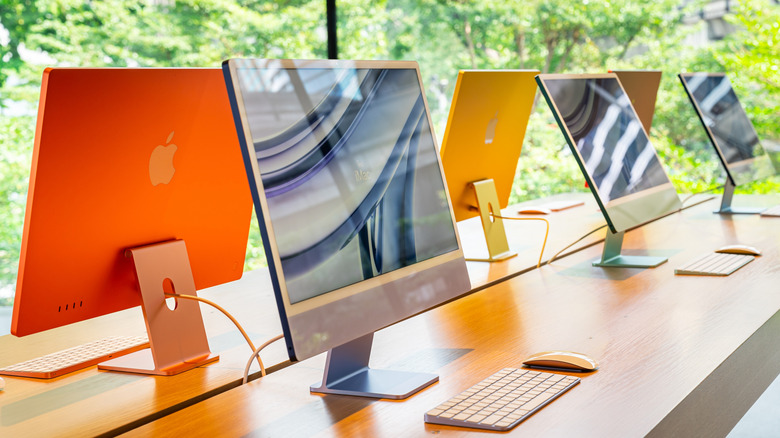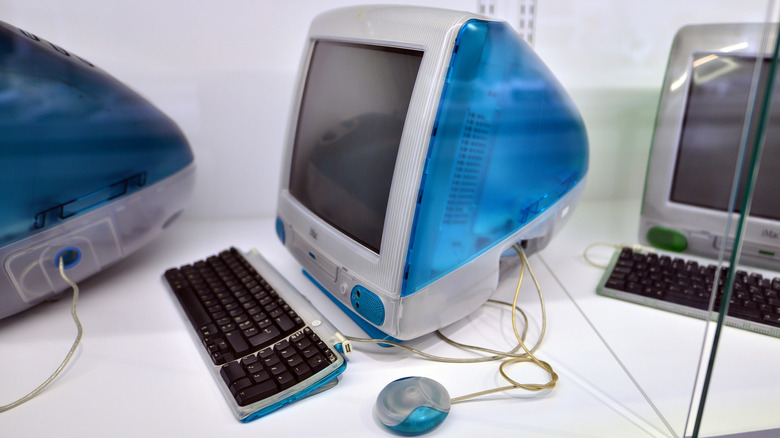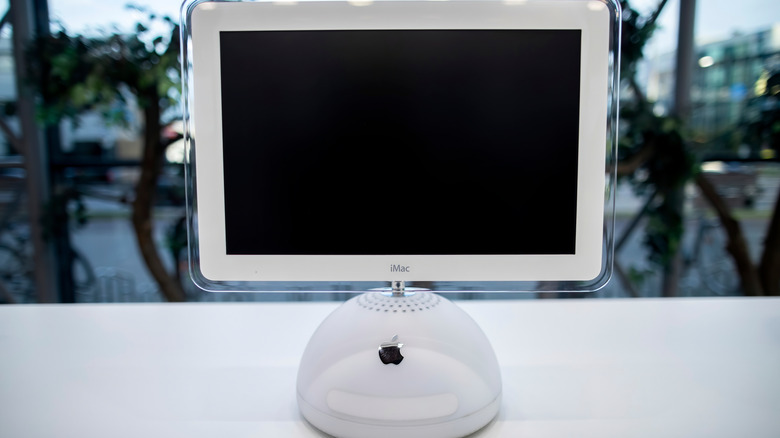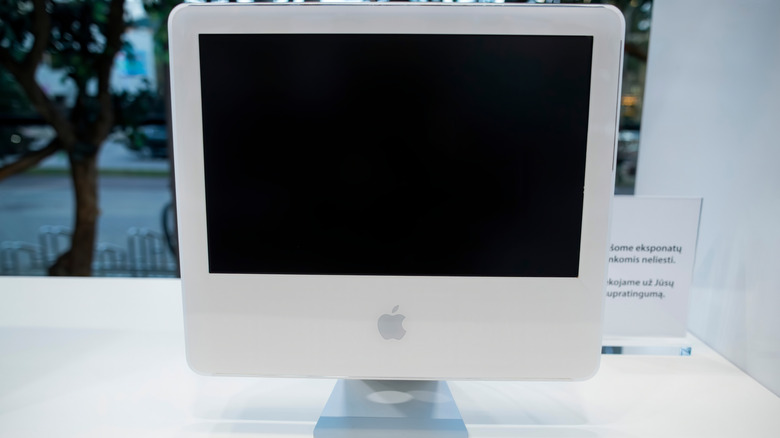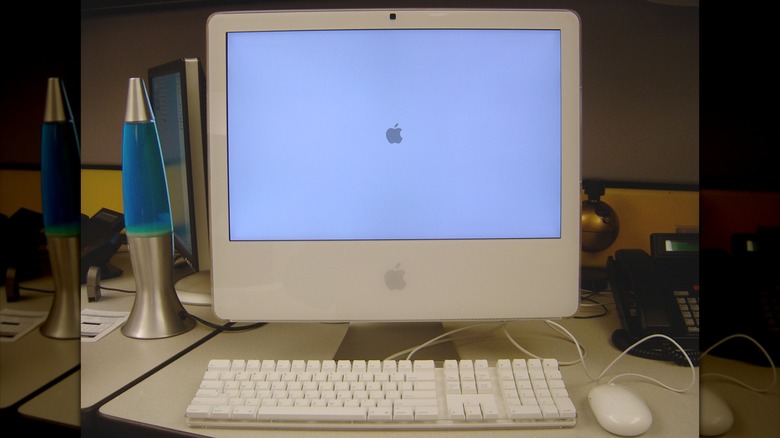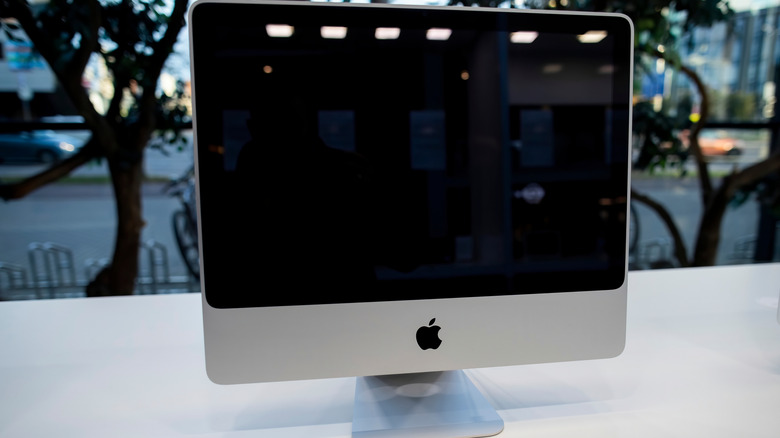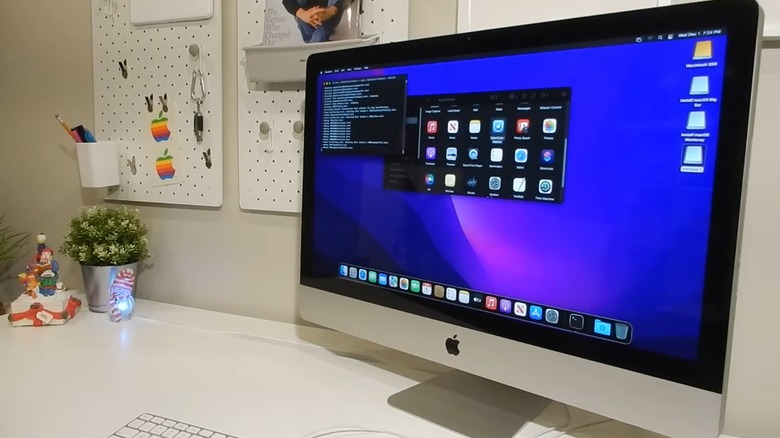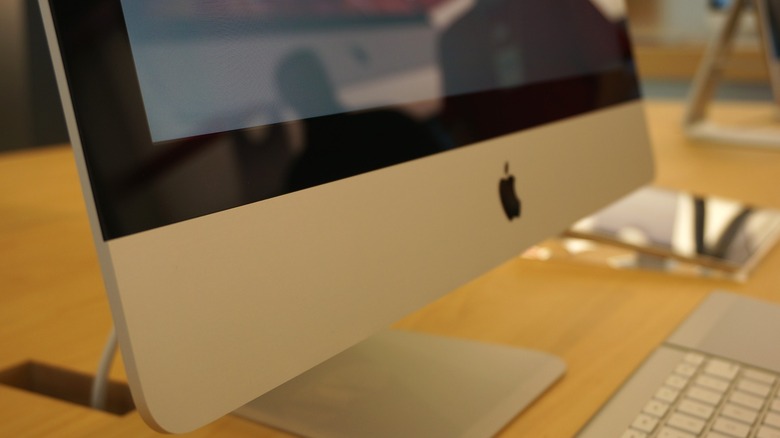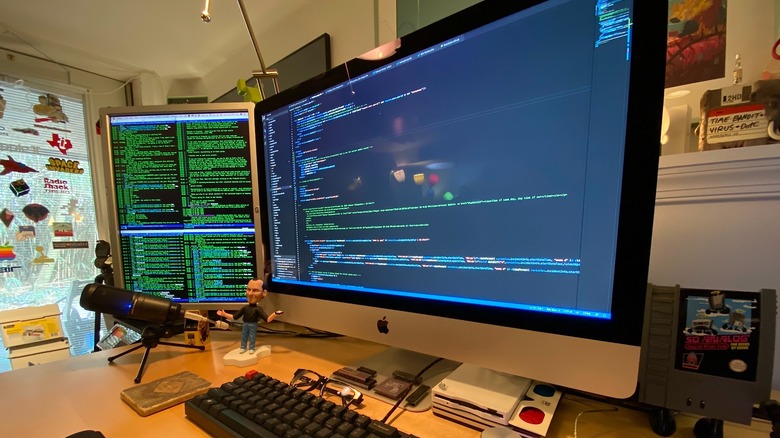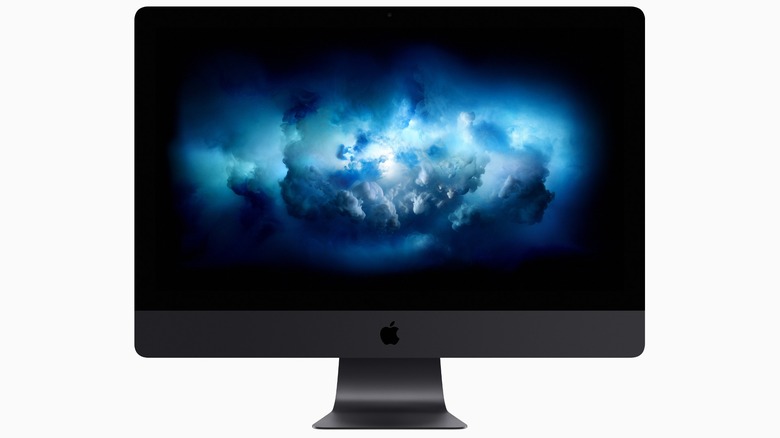The Evolution Of iMac: How Apple's Popular Desktop Has Transformed From 1998 To Now
We may receive a commission on purchases made from links.
All-in-one computers may not be the most popular form factor for personal computing these days — laptops and tablets rule the roost, for the most part — but they've been a huge part of the computing landscape ever since 1971's HP 9830A. Some recognize the 9830A as the first all-in-one desktop computer ever built, but as important as that device was, few companies have likely done as much for the form factor as Apple.
The Apple Macintosh 128K, launched in 1984, was a cute little beige box with a nine-inch monochrome display that packed all the essential components into one. It was a hit, selling 70,000 units in 100 days, kickstarting a family of devices that would go strength to strength after that. Apple's Macs hit the half-million mark in September 1985 and achieved the one million milestone in March 1987.
While the classic Apple Macintosh may be a familiar sight for retro computing fans, it's likely not the all-in-one Apple computer that most will remember. For that, we have to turn to the iMac, which Steve Jobs introduced in 1998 and would eventually become one of Apple's — and the computing world at large's — most iconic brands. As Apple's all-in-one powerhouse inches ever closer to its 30th birthday, let's look back over the past 20-plus years and see how it's evolved.
iMac G3 (1998)
The mid-1990s had not been kind to Apple. Ambitious but commercially unappealing projects like the $599 Pippin games console — around $1,200 in today's money and double the price of Sony's PlayStation – flopping and pushing the company to the point of bankruptcy. However, that all changed when Steve Jobs returned to the Apple fold in 1997 and introduced the iMac G3 just a year later.
Even by the standards of late-1990s design, the iMac G3 was a bold statement. With its 15-inch CRT monitor ensconced in colorful see-through plastic, the iMac may not have had the minimalist cool of the older Apple Macs, but what it lacked in restraint it made up for in pure eye-catching appeal. Big, bulbous, and impossible to ignore, the iMac G3 arguably kickstarted Apple's focus on fashion — as Steve Jobs told CNN — and mass appeal.
The G3 debuted with a Bondi Blue shell, 233 MHz PowerPC CPU, and 32 MB of RAM for $1,299 — just over $2,500 in 2024 money — but Apple would keep updating the G3 over the next few years, upgrading the hardware and introducing the dizzying array of colors many remember it for. A slot-loading DVD drive and more powerful CPUs came in 1999 and processing power increased from there, culminating in a 700 MHz Special Edition for the summer of 2001. Some may remember it as one of the weirdest Macs ever made, but it's also undeniably one of the most memorable — and important.
iMac G4 (2002)
The first few years of the 2000s marked the gradual decline of the CRT monitor, spelling the death knell for the bulky iMac G3. So what did Apple do? Introduce another iconic iMac, of course, in the form of the iMac G4. In place of the G3's CRT was a 15-inch TFT LCD that, in the words of Wired, was "leading the way" for the rest of the computer industry.
Still, the thin — for the time — screen posed a new problem. Where would Apple house all the computer hardware? In a stroke of genius, Apple's designers came up with the idea of a 10.6-inch half-sphere base to hold all the hardware and connectivity from which the monitor arm protruded. The world would never see a computer quite like the iMac G3 again, but the G4 showed that Apple still had an eye for quirky and fun designs, as it was not quite ready to embrace the all-business design language it would eventually adopt for the iMac.
It looked something like an upside-down desk lamp, and that — along with Pixar's iconic "Luxo Jr." short — earned the iMac G4 the adorable nickname of iLamp, a nickname that's stuck to this day. It's still a great design now, even if the LCD's thick bezels are undeniably dated. The G4 debuted with 700 and 800 MHz PowerPC CPUs, with larger – 17- and 20-inch — LCDs and faster CPUs coming over the next few years, culminating in a 1.25-GHz model that debuted toward the tail end of 2003.
iMac G5 (2004)
The mid-2000s saw a big shift in Apple's design language for the iMac. The G5, which debuted in 2004, dropped the fun stylings of the G3 and G4 in favor of a more professional look. To be fair, it wasn't all that different from the G3 conceptually, once again unifying the computer and display into one single unit after the G4's separate monitor and computer. However, the fact that it had a flat-screen display meant that it was essentially a two-inch-thick slab of plastic with a 17- or 20-inch LCD at the front and a 1.6 or 1.8 GHz PowerPC CPU inside.
Now, don't get us wrong. The G5 wasn't an ugly computer, and it still doesn't look all that bad today — thick bezels notwithstanding. However, it certainly was a more businesslike look than the previous iMacs, and was the first indication of what the iMac would look like going forward. Contemporary reviews were very positive, although some reviewers criticized Apple for only offering 256MB of RAM as standard.
Apple resolved that issue relatively quickly, though, and started shipping mid-2005 iMac G5s with 512MB from the factory. Larger hard drives also came as standard, as did gigabit ethernet. Apple also ditched the 1.6 GHz CPU, offering 1.8- and 2.0-GHz processors instead. Apple didn't rest on its laurels, though. It updated the G5 again in October 2005, bringing with it a thinner case, slightly faster CPUs, and a built-in iSight camera, which was a first for the iMac.
iMac Core Duo and Core 2 Duo (2006)
The iMac G5 was, in most contemporary eyes, a great desktop computer. However, the PowerPC CPUs powering it were perhaps starting to feel a bit underwhelming even only a couple of years after its debut, lagging behind the Intel-powered Windows competition. That all changed in January 2006 with the debut of the Intel iMac.
The new 2006 iMac wasn't a big departure design-wise, as it shared the same case and features — including the iSight camera — as the final PowerPC iMac. The major changes were under the hood, as the iMac now came with a 1.8 or 2.0 GHz Intel Core Duo CPU (on 17- and 20-inch models, respectively), complemented by faster DDR2 RAM and an improved ATI Radeon GPU. Apple would eventually introduce Boot Camp a few months after the Intel iMacs, allowing owners to take advantage of their x86 Intel CPUs and run Windows XP and native Windows applications on their iMacs.
Reviewers appreciated the much-improved performance of the Intel iMac — these were Intel's glory years, after all, when it led in consumer CPU performance — even if it had some early software-related teething problems with non-native applications. Apple would quickly update the iMac to use Intel's then-new Core 2 Duo CPUs in September, rejigging the model line along with the new CPU. 2.16-GHz 20- and 24-inch models were also now available, with the 24-inch iMac boasting the largest screen of an iMac to date.
[Image by Lily Ballard via Flickr | Cropped and scaled | CC BY 2.0]
Aluminum iMac (2007)
The second half of the 2000s was a period of rapid iteration for the Apple iMac. 2005 saw the debut of iSight, Intel CPUs came in 2006, and 2007 was the year that Apple first embraced a material that is now synonymous with its products — aluminum. Apple's all-in-one PC wasn't always the sleek slab of machined metal it is now. If you like that look — and we'd venture most do — then you have the aluminum iMac from mid-2007 to thank.
Apple's mid-2007 iMac brought big changes to the product line. First up was, of course, the new body. The white plastic body was gone, replaced with an aluminum enclosure and a glass front that met the aluminum almost seamlessly. The white bezels were also a thing of the past, with the LCD now having under-glass black bezels. We're still a ways away from the ultra-thin bezels of modern iMacs, but it was a big improvement over the old iMacs.
The company also dropped the smaller iMacs, making this new aluminum model only available in 20- and 24-inch versions. CPUs were now 2.0 or 2.4 GHz Intel Core 2 Duo, with 1GB of RAM now standard, but the other hardware remained broadly unchanged. Updates came soon after, with 2008 bringing slightly faster 2.4, 2.66, and 2.8 GHz Intel CPUs. This updated aluminum iMac was also the first to crack the 3.0 GHz barrier, with power users able to spec a 3.06 GHz CPU using Apple's build-to-order system.
Unibody aluminum iMac (2009)
Just two years after introducing the first aluminum iMac, Apple introduced a new look that many will likely consider the trademark iMac visual style. The big news on the industrial design front was the debut of a seamless unibody aluminum enclosure, with edge-to-edge glass on the front. It wasn't a radical departure from the first iteration of the aluminum iMac, but it was a great refinement of an already good design that would essentially stay in place for the next decade or so.
The late 2009 iMac didn't just have a pretty new look, though. Apple also changed the displays, with 16:9 21.5- and 27-inch IPS screens now the standard, in place of the 16:10 20- and 24-inch CCFL displays of the previous iMac. The 2009 iMac is also notable for being the first iMac to come with a quad-core Intel CPU, with the 27-inch, 2.66 GHz Core i5 iMac topping the range at a cool $1,999 (just under $3,000 today).
The higher-end 27-inch iMacs also gained video input via Mini DisplayPort, allowing owners to use them as monitors — a handy feature, given the 27-inch's combination of IPS panel technology and 1440p resolution. For context, Ars Technica was still recommending 24-inch monitors as the sweet spot in 2009. The Apple Magic Mouse also debuted alongside the unibody iMac, taking the place of the Mighty Mouse in the iMac's peripheral bundle.
Slim aluminum iMac (2012)
Apple's now mostly iterative approach to the iMac's aesthetics continued in the next decade, when the company debuted a slimmed-down aluminum iMac in late 2012. Apple claimed a volume reduction of up to 40 percent and a 5 mm thin edge, although this came at the cost of the SuperDrive, which Apple dropped starting this generation.
While some may have mourned the loss of the SuperDrive, there was a much bigger sacrifice that users would have to make — at least, on the 21.5-inch iMac. For whatever reason, Apple decided to make RAM upgrades much tougher on the smaller iMac. While the 27-inch model was much the same as it had been, the 21.5-inch model required almost total disassembly before one could access the RAM, a task that Ars Technica called "basically impossible for end users." It wasn't as bad as the soldered RAM on MacBooks, admittedly, but intentionally making RAM upgrades difficult wasn't a good look — then or now.
Beyond the pursuit of slimness above all else that defined this generation of iMac, one notable upgrade for this generation was the introduction of flash storage, with a 768 GB SSD or hybrid Fusion Drive storage available as options for users who wanted more performance than a traditional hard drive could offer. Intel's quad-core Ivy Bridge i5 CPUs were now standard across the range, in keeping with Apple's 2011 move to quad-core CPUs for the last iteration of iMac, with Core i7 CPUs also available as options.
[Image by Mike Lau via Wikimedia Commons | Cropped and scaled | CC BY-SA 2.0]
iMac Retina (2015)
2015 was a big year for the iMac, primarily for the new displays Apple introduced in October that year. Retina was not a new brand for Apple, having debuted on the iPhone 4 in 2010, but the consumer tech world probably hadn't quite seen anything like the Retina displays that Apple would introduce to the 21.5- and 27-inch iMacs.
The 21.5-inch iMac gained a new 4,096x2,304 screen – proper 4K and not the UHD many of us are familiar with — while the 27-inch iMac went one step further, packing a 5,120x2,880 5K screen. Apple kept the 1080p displays as an option for the smaller iMac, but the 27-inch dropped the old 1440p screen entirely for Apple's new high-resolution panel. While 4K may seem common now, it's worth remembering that these came out at a time when 768 and 1080p displays were the norm, setting Apple's new iMacs way apart from the crowd.
Apple's 2015 update also brought Intel's then-new Skylake CPUs to the all-in-one — at least, on the 27-inch model. The 21.5-inch iMacs were still on Broadwell era CPUs, but the 27-incher was all Skylake, topping out at the Core i7-6700K. The iMac's peripherals also got an update, with the Magic Mouse 2 now coming in the bundle alongside a new Apple Magic Keyboard and Magic Trackpad 2.
[Image by Blake Patterson via Flickr | Cropped and scaled | CC BY 2.0]
iMac Pro (2017)
Part of the iMac's success over its long lifespan lay in its accessibility. With reasonable prices and the easy setup experience of an all-in-one machine, the iMac likely wasn't the obvious candidate for a high-end Pro model. However, that's exactly what Apple decided to offer in 2017, in the form of the iMac Pro.
Introduced in mid-2017 and launching in December 2017, the iMac Pro was, on the surface, much the same as the 27-inch Retina iMac that Apple was already selling at the time. Sure, it had a darker Space Gray paint job — which, for the record, we think still looks great in 2024 — but it was otherwise the same device on the outside, with its clean lines, aluminum body, and curved back panel. The big changes were on the inside.
In place of the consumer-grade Intel Core CPUs of the standard iMac came high-end, workstation-grade Intel Xeon processors, ranging from the 3.2 GHz, eight-core Intel Xeon W-2140B to the 2.3 GHz, 18-core Xeon W-2191B. All iMac Pros also came with 32GB of ECC RAM, ATI Radeon Pro Vega graphics, and a 1TB SSD, with support for up to 512GB of RAM and 4TB of SSD storage. This sort of power didn't come cheap, though, and Apple charged a hefty $4,999 for the iMac Pro.
Despite that, reviewers liked the pro-grade all-in-one, although that didn't help it last more than a handful of years. Apple discontinued the iMac Pro in 2021 and — despite rumors to the contrary – has yet to revive it.
iMac Apple Silicon (2021)
Finally, we come to the latest and greatest iteration of Apple's venerable all-in-one, the Apple Silicon-powered iMac. Coming a year after Apple first introduced the M1 chip, the updated iMac not only got a huge boost in processing power but came with a fresh new look that managed to move the design language forward while also harkening back to the venerable iMac G3's cheerful aesthetic.
Apple's 2021 update was a huge one for the iMac. We've touched on the debut of the M1 — the iMac never got the M1 Pro or M1 Max — but that wasn't the only big change. Apple also decided to stop offering multiple versions of the iMac, too, settling on a 24-inch, 4.5K Retina display for its all-in-one desktop. It offered this package in a now almost completely flat, ultra-thin aluminum frame available in everything from Apple's signature brushed silver to bright oranges and yellows. Nothing nearly as crazy as the Blue Dalmatian and Flower Power iMac G3s from 2001, admittedly, but it was a nice burst of color.
The M3 chip came to the iMac in 2023, while 2024 saw the debut of Apple's M4 chip, bringing with it even more performance, Thunderbolt 4 connectivity, and, of course, Apple Intelligence. But the M4 iMac also brought with it more RAM, with the default loadout now 16GB instead of the 8GB Apple had stuck with for the M1 and M3 iMacs.
